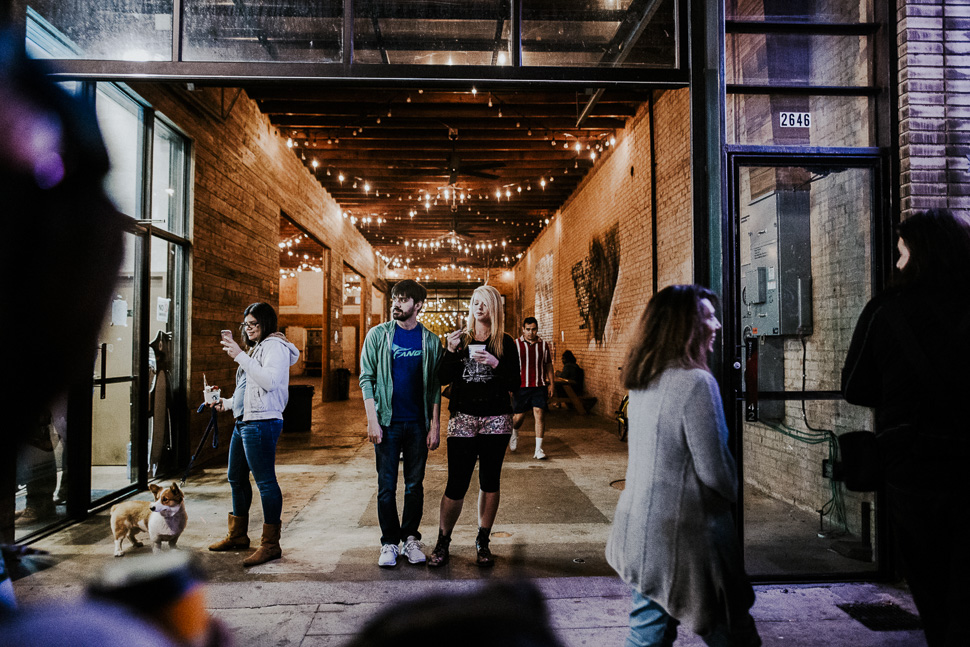North Texans have long known how cool Deep Ellum is with its colorful murals, old buildings, quaint shops, eclectic artists, and good food.
Rideshare tech giant Uber thinks it’s cool too, recently announcing Deep Ellum will be the home of the company’s second-largest campus outside of its San Francisco headquarters. It quickly became one of the biggest North Texas real estate moves in recent years—Uber said it’s taking 450,000 square feet of space in a planned tower at The Epic mixed-use development, bringing 3,000 jobs with it.
And now, global real estate services firm Cushman & Wakefield puts its own cool stamp on Deep Ellum by including the area east of downtown Dallas among the Top 20 in its Cool Streets of North America report.
Deep Ellum is the type of place where a mohawk-sporting artist, a suit-wearing business person, and a computer programmer in a T-shirt might be sitting side-by-side eating at one of the neighborhood’s plentiful restaurants.
In its new report, Cushman & Wakefield looks at what’s driving the rise of the hottest retail districts across the United States and Canada, giving in-depth information on 100 of the coolest areas.
“While Dallas has many walkable urban districts that may also be considered by some to be ‘Cool Streets’, Deep Ellum stands out due to its gritty, authentic feel,” Chris Harden, a director within Cushman & Wakefield’s Capital Markets Group who leads the retail, urban land, and mixed-use investments practice in Texas, said in a statement.
READ NEXT Did you know there’s a hostel in Deep Ellum? Take a (Photo) Tour of Dallas’ First Hostel
Harden continues, “Despite new construction, the area has maintained its unique sense of place. The elements that have always made Deep Ellum special have been preserved and cultivated by the real estate development and investment community. That is why it continues to attract some of Dallas’s most creative residents to live and work there.”
Deep Ellum’s “critical mass” of historic and eclectic architecture, a walkable street grid, and a live music scene, along with entertainment venues, unique culinary offerings, top tech and design companies, strong branding and identity, and contiguous and cooperative ownership throughout the neighborhood help differentiate it from other areas of Dallas, according to a statement.

[Image: Courtesy Cushman & Wakefield]
When Uber announced its Deep Ellum project at The Epic mixed-used development in August, Dallas Mayor Eric Johnson pointed out that beyond the numbers, Dallas and Uber are “just a great match.”
“Dallas is a vibrant, diverse, welcoming, and innovative city,” Johnson said in a statement in August, “and I’m certain Uber and its employees will flourish here.”
The Dallas Morning News reported on October 8 that Uber has filed construction permits valued at $135.5 million for its new office high-rise tower and parking garage, totaling more than 1 million square feet of space.

Downtown Dallas looms in the distance beyond Deep Ellum [Photo: Courtesy Deep Ellum Foundation]
Cool Streets report has noted changes in North American landscape
Joining Deep Ellum in the top 20 are: Portland, Oregon (whole city); Austin (whole city); Denver (whole city); Chicago (Fulton Market); Boise (downtown); Los Angeles (Arts District); Buffalo, New York (downtown); Manhattan (Bond Street/NoHo); Montreal (Mile End); Honolulu (Kaka’ako); Indianapolis (Massachusetts Avenue Arts District); Boston (South End); Louisville (East Market District/NuLu); Atlanta (Old Fourth Ward); Memphis (Midtown/Overton Square); Sacramento (Midtown); Cleveland (Ohio City/Tremont); Milwaukee (Historic Third Ward); and Houston (Lower Westheimer/Montrose).
Since the inaugural Cool Streets report was released in 2016, many changes have been seen across North America, according to a statement.
While the Cool Streets trend continues to be strong in the “musical chairs game of affordability and opportunity” in large, primary markets and the so-called 24-hour cities, the overall growth in secondary or tertiary markets has led to new opportunities for both investors and retailers.

[Photo: Courtesy Deep Ellum Foundation]
Garrick Brown, Cushman & Wakefield’s vice president of retail intelligence, Americas, said in a statement that value, convenience, and experience are the three basic tenets that draw consumers to a retail store or shopping destination.
Brown said that in the age of new commerce, however, that convenience and quick delivery of goods ordered online are the most important.
Those changes, along with shifting consumer preferences and Wall Street pressures on legacy brick-and-mortar brands, were the catalyst for the disruption of traditional retail, leading to the evolution of Cool Streets retail districts, Brown said in a statement.
“It’s important to remember that Cool Streets are about more than just retail,” Brown said. “Their rise is at the nexus of multiple trends that impact not only commercial real estate but also society as a whole: the new urbanism, the impact of opportunity zones, the growing gulf between skilled and unskilled labor, the benefits and risks of a global tech-driven economy, and the rise of an experience-based economy.”
Brown added, “Make no mistake: these burgeoning enclaves aren’t just for hipsters or adventurous millennials. Cool matters—and cities that actively cultivate livability in their neighborhoods through live/work/play environments and invest in education to attract and retain human talent will thrive in the new global economy. Put simply: If you make it cool, they will come.”

Art is an important element of Deep Ellum [Photo: Courtesy Deep Ellum Foundation]

[Photo: Michael Samples]

[Photo: Michael Samples]

[Photo: Courtesy Deep Ellum Foundation]

[Photo: Michael Samples]
![]()
Get on the list.
Dallas Innovates, every day.
Sign up to keep your eye on what’s new and next in Dallas-Fort Worth, every day.









![Erica Kosemund, Chief Brand Officer, Choctaw Nation of Oklahoma; Gillian Breidenbach, Chief Partnership Officer, North Texas FWC Organizing Committee; Chief Gary Batton, Chief of Choctaw Nation of Oklahoma; Monica Paul, Executive Director of Dallas Sports Commission and President of North Texas FWC Organizing Committee; John Hobbs, Senior Executive Officer of Communications, Choctaw Nation of Oklahoma; and Heidi Grant, Senior Executive Officer of Commerce Administration, Choctaw Nation of Oklahoma, celebrate Choctaw Casinos & Resorts becoming an Official Dallas World Cup 2026 Host City Supporter. [Photo: North Texas FWC Organizing Committee/Choctaw Casinos & Resorts]](https://s24806.pcdn.co/wp-content/uploads/2025/12/FIFA-Choctaw-dec-2025-75x69.jpg)




![Erica Kosemund, Chief Brand Officer, Choctaw Nation of Oklahoma; Gillian Breidenbach, Chief Partnership Officer, North Texas FWC Organizing Committee; Chief Gary Batton, Chief of Choctaw Nation of Oklahoma; Monica Paul, Executive Director of Dallas Sports Commission and President of North Texas FWC Organizing Committee; John Hobbs, Senior Executive Officer of Communications, Choctaw Nation of Oklahoma; and Heidi Grant, Senior Executive Officer of Commerce Administration, Choctaw Nation of Oklahoma, celebrate Choctaw Casinos & Resorts becoming an Official Dallas World Cup 2026 Host City Supporter. [Photo: North Texas FWC Organizing Committee/Choctaw Casinos & Resorts]](https://s24806.pcdn.co/wp-content/uploads/2025/12/FIFA-Choctaw-dec-2025.jpg)


















